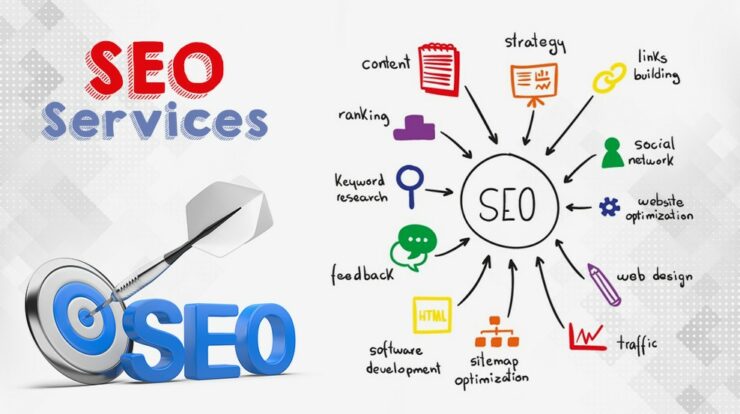
A web application firewall, often known as a WAF, protects web applications by monitoring and filtering HTTP traffic between a web app and the Internet. It generally protects online applications against XSS cross-site forgery, SQL injection, and file inclusion, among other things. A WAF is a protocol layer 7 (in the OSI model) protection that is not intended to fight against all forms of assault. This attack mitigation is typically part of a suite of technologies that together form comprehensive protection against various attack vectors.
When a Web Application Firewall is deployed in front of a web app, it creates a barrier between the web application and the Internet. While a proxy server protects the identity of a client machine by utilizing an intermediary, a WAF is a form of reverse proxy that protects the server from exposure by requiring clients to transit through the WAF before accessing the server.
A Web Application Firewall runs according to a set of rules known as policies. These policies try to guard against application vulnerabilities by screening out harmful traffic. A WAF’s utility stems partly from the simplicity with which policy changes may be deployed, allowing for faster reaction to various attack vectors; for example, during a DDoS assault, rate limitation can be swiftly imposed by updating WAF regulations.
What Is the Role of WAF Security?
Web Application Firewall are critical for an increasing number of enterprises that provide products or services online, such as mobile app developers, social media providers, and digital banking. A WAF can assist you in protecting sensitive data, such as client details and credit card information, and preventing data leaks.
Most sensitive data is often stored in a backend database accessible via web apps. Mobile applications and IoT devices are rapidly being used by businesses to ease commercial interactions, with many online transactions taking place at the application layer. Attackers frequently target programs to gain access to this data.
Using a Web Application Firewall can assist you in meeting compliance standards such as PCI DSS (the Payment Card Industry Data Security Standard), which applies to any firm that handles cardholder data and necessitates the implementation of a firewall. As a result, a WAF is an integral component of every organization’s security paradigm.
A WAF is necessary, but it is advised to combine it with additional security measures like intrusion detection systems (IDS), intrusion prevention systems (IPS), and traditional firewalls to establish a defense-in-depth security paradigm.
What is the difference between network-based, host-based, and cloud-based WAFs?
A WAF can be implemented in one of three ways, each with its own set of advantages and disadvantages:
In most cases, a network-based WAF is hardware-based. Because they are placed locally, they reduce latency; nevertheless, network-based WAFs are the most expensive solution and necessitate the storage and maintenance of actual hardware.
A host-based Web Application Firewall can be entirely incorporated into an application’s software. This approach is less costly and more customizable than a network-based WAF. A host-based WAF’s disadvantages include using local server resources, implementation complexity, and maintenance expenses. These components usually need engineering work and might be pricey.
Cloud-based WAFs provide an economical and simple-to-implement solution; they often provide a turnkey installation that is as simple as a DNS update to reroute traffic. Cloud-based WAFs also offer a low upfront cost because customers pay for security as a service on a monthly or annual basis. Cloud-based WAFs can also provide a constantly updated solution to guard against the most recent attacks with no additional labor or cost on the user’s part. The disadvantage of a cloud-based WAF is that users delegate responsibility to a third party; therefore, some elements of the WAF may be opaque to them. (One sort of cloud firewall is a cloud-based WAF; learn more about cloud firewalls.)
Models of WAF Security
WAFs can employ either a positive or negative security model or a hybrid of the two:
The positive WAF security concept entails a whitelist that filters traffic based on a list of approved components and actions—anything not on the list is banned. The benefit of this paradigm is that it can detect and prevent new or undiscovered assaults that the developer did not expect.
The negative security concept entails a “blacklist” (or “denylist”) that only prohibits specified items—anything not on the list is permitted. This strategy is simpler to deploy but does not ensure all hazards are addressed. It also necessitates the upkeep of a potentially long list of harmful signatures. The security level is determined by the number of restrictions imposed.
The Most Effective Web Application Firewalls
Many web application firewall vendors want to acquire as much market share as possible by selling their Web Application Firewall systems in as many configurations as feasible. As a result, in many circumstances, the same WAF may be delivered as a virtual machine software package, a network appliance, or a cloud-based SaaS solution. A cloud-based Web Application Firewall can also be obtained as a fully managed solution.
#1. StackPath
StackPath, which specializes in “edge technology,” offers the Web Application Firewall as part of a portfolio of cloud-based services. This phrase refers to pushing connected services out to the network’s edge and beyond. StackPath is a cloud service that collects all the traffic before it reaches your Web server.
StackPath’s offshore setup adds further security to your Web server by preventing malicious programs from accessing your resources.
Key characteristics include:
- Proxy service for virus prevention
- IP address evaluation for DDoS prevention
#2. AppTrana
It’s a fully managed Web application firewall that includes content acceleration and a cloud CDN. You must route your traffic through Indusface’s AppTrana Service, which is hosted in several regions across AWS data centres.
Key characteristics include:
- Service that is managed
- Network for content distribution
- Delivery has been accelerated.
- Backup protection
- Evaluations of security
#3. Fortinet’s FortiWeb
Fortinet’s FortiWeb WAF is available as a SaaS solution, a VM-based software package, or an appliance. The WAF software may also be hosted in a private cloud and deployed as a container-based solution.
Key characteristics include:
- DDoS protection from a well-known brand
- Intelligence on threats
#4. Sucuri
Sucuri Web Application Firewall is one of a range of website security tools. Sucuri’s cloud-based protection solution is a web-based service. Sucuri’s server hosts your website’s address, and all of your Web traffic is routed via it first.
Key characteristics include:
- Service of proxies
- DDoS mitigation
- Rapid scanning
#5. Barracuda
The Barracuda Web Application Firewall is offered as a SaaS solution, an appliance, a virtual appliance, or as a private cloud account installation. Because of the flexibility of its installation, the WAF might be useful for enterprises of any size.
Key characteristics include:
- Options for deployment
- Malware and malicious websites are blocked.
- Traffic control
#6. Imperva Cloud WAF
Imperva is a key participant in the cybersecurity business with full WAF services. The online version of Imperva’s web application firewall functions as a proxy server, intercepting and cleaning all incoming traffic before forwarding it to the protected web server.
Key characteristics include:
- service of proxies
- Continuity of site availability
- Patching for security
#7. Microsoft Azure
Microsoft Azure is a well-known hypervisor system that has grown to become one of the most successful cloud platforms. The Azure subsidiary of Microsoft, like AWS, not only provides a platform system for cloud services, but it also offers a variety of software that provides utility to other systems. One of these is the Web Application Firewall.
Key characteristics include:
- A powerful brand
- filtering of traffic
- Data security
#8. Prophaze
Prophaze WAF-as-a-Service is a web application firewall proxy server hosted in the cloud. AI procedures in the Prophaze service enhance detection rules by altering the baseline of standard behavior. This feature helps limit false alerts’ frequency while still allowing actual site visitors full access.
Key characteristics include:
- WAF includes bot protection, RASP, DDOS, and a CDN solution with an unlimited number of rules.
- In just 15 minutes, you’ll be on board.
- Free SSL Certificates indefinitely
- 24×7 support on Teams, Zoom, and Google with a 30-day data retention policy
- Prophaze is a subscription-based service, with three options offered. The most expensive option, known as SaaS, is multi-tenant, making it suited for usage by MSPs. Prophaze WAF-as-a-Service is available for a free trial.
#9. Cloudflare WAF
Cloudflare has grown quite effective at protecting web hosts from DDoS assaults, and they supplement their defence with a web application firewall. This is an extremely popular online service. On behalf of their vast client base, their servers handle 2.9 million requests every second.
Key characteristics include:
- Optional gratuity
- Network for content distribution
- Backup protection
#10. F5 Essential App Protect
F5 is a long-standing cybersecurity service company that owns NGINX, Inc., the popular Nginx web server technology maker. The combined experience of F5 and NGINX contributed to developing the F5 Essential App Protect cloud-based web application server.
Key characteristics include:
- associated with NGINX
- The setup is simple.
- Options for deployment
FAQs
Is a firewall required for a web application?
A WAF may provide crucial security for any online organization that handles sensitive client data securely. Businesses often use a WAF to protect their online applications from sophisticated and targeted assaults such as cross-site scripting (XSS) and SQL injection, which might lead to fraud or data theft.
Does a WAF take the place of a firewall?
WAFs give extra security to network firewalls but do not replace regular network-layer firewalls. A web application firewall operates at the application layer (OSI Layer 7).













